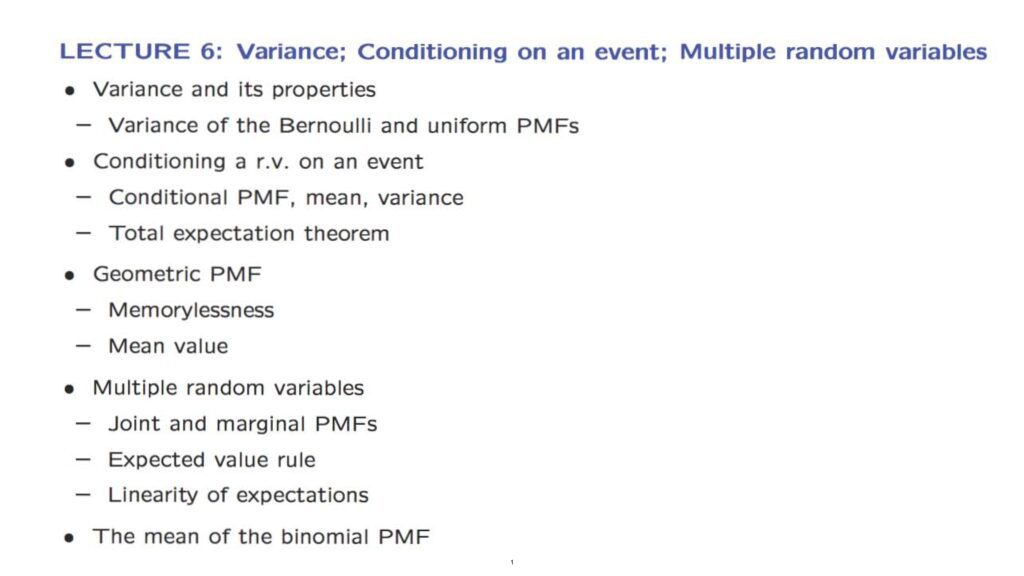In the previous lecture we introduced random variables, probability mass functions and expectations.
In this lecture we continue with the development of various concepts associated with random variables.
There will be three main parts.
In the first part we define the variance of a random variable, and calculate it for some of our familiar random variables.
Basically the variance is a quantity that measures the amount of spread, or the dispersion of a probability mass functions.
In some sense, it quantifies the amount of randomness that is present.
Together with the expected value, the variance summarizes crisply some of the qualitative properties of the probability mass function.

In the second part we discuss conditioning.
Every probabilistic concept or result has a conditional counterpart.
And this is true for probability mass functions, expectations and variances.
We define these conditional counterparts and then develop the total expectation theorem.
This is a powerful tool that extends our familiar total probability theorem and allows us to divide and conquer when we calculate expectations.
We then take the opportunity to dive deeper into the properties of geometric random variables, and use a trick based on the total expectation theorem to calculate their mean.
In the last part we show how to describe probabilistically the relation between multiple random variables.
This is done through a so-called joint probability mass function.
We take the occasion to generalize the expected value rule, and establish a further linearity property of expectations.
We finally illustrate the power of these tools through the calculation of the expected value of a binomial random variable.